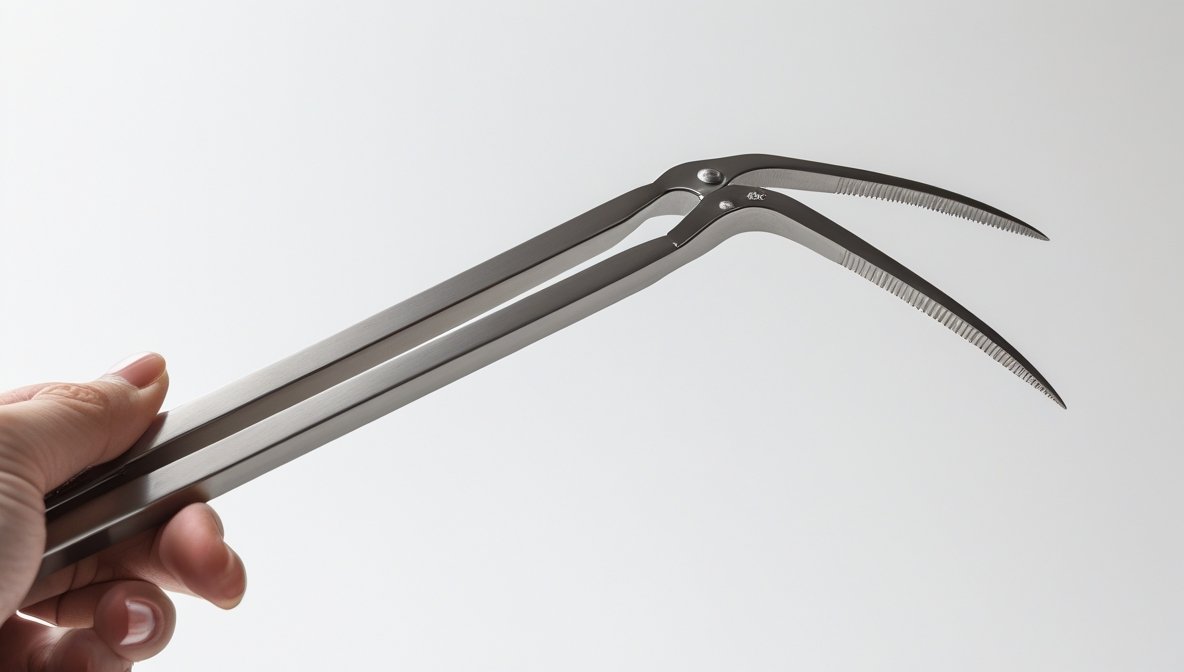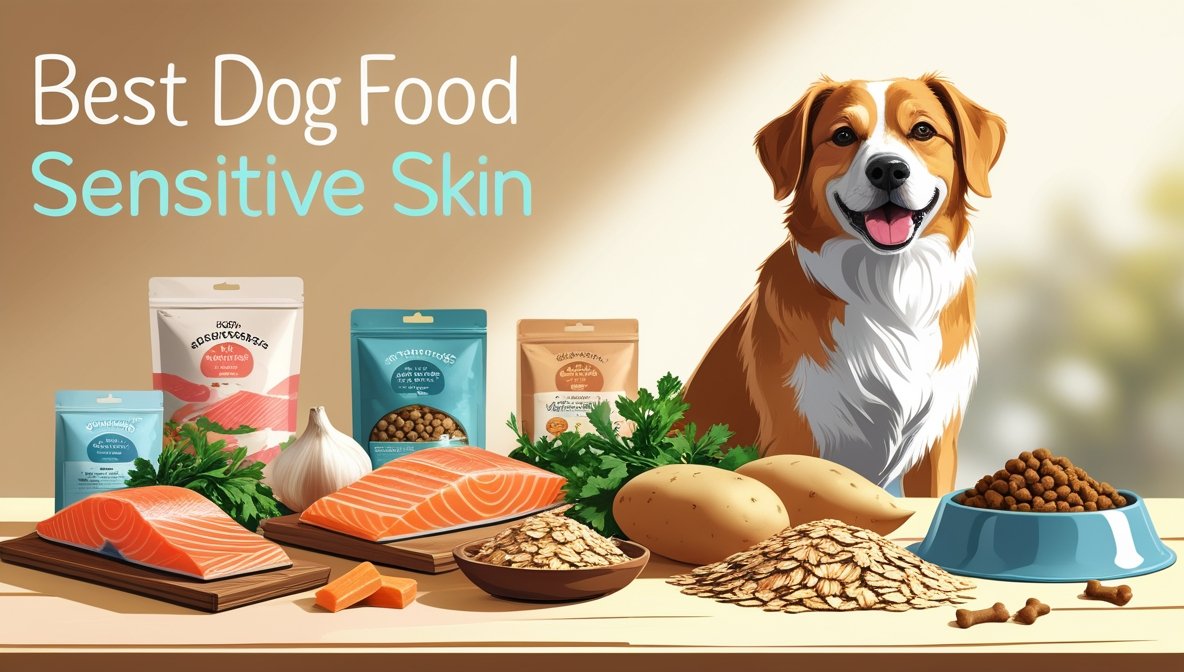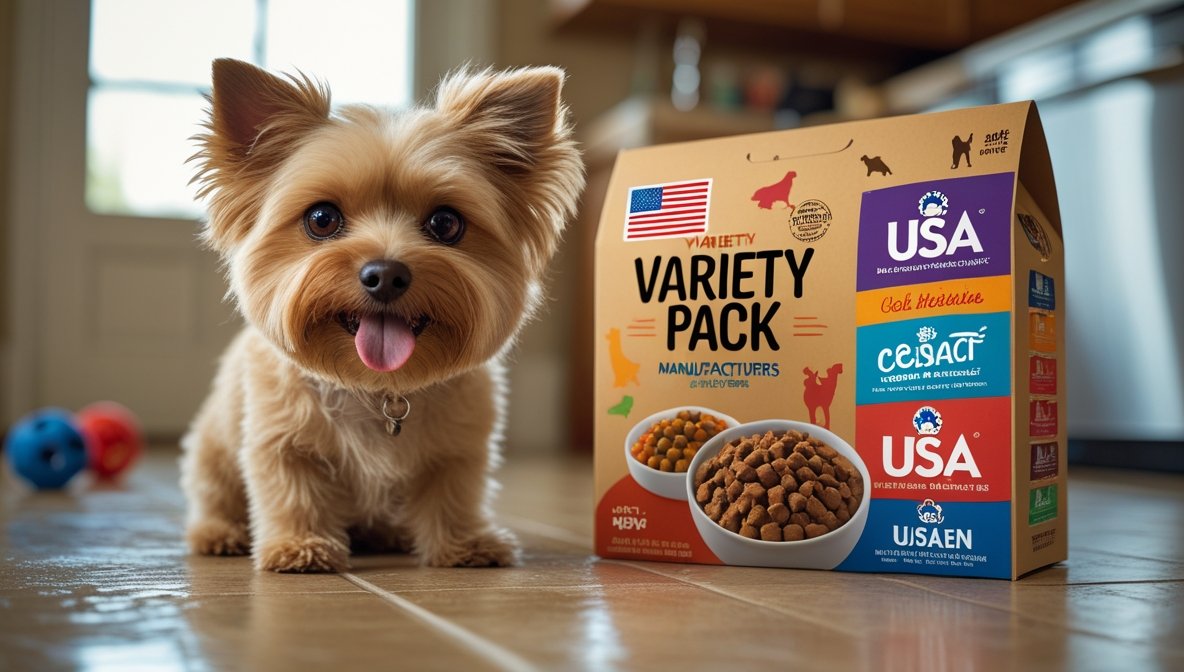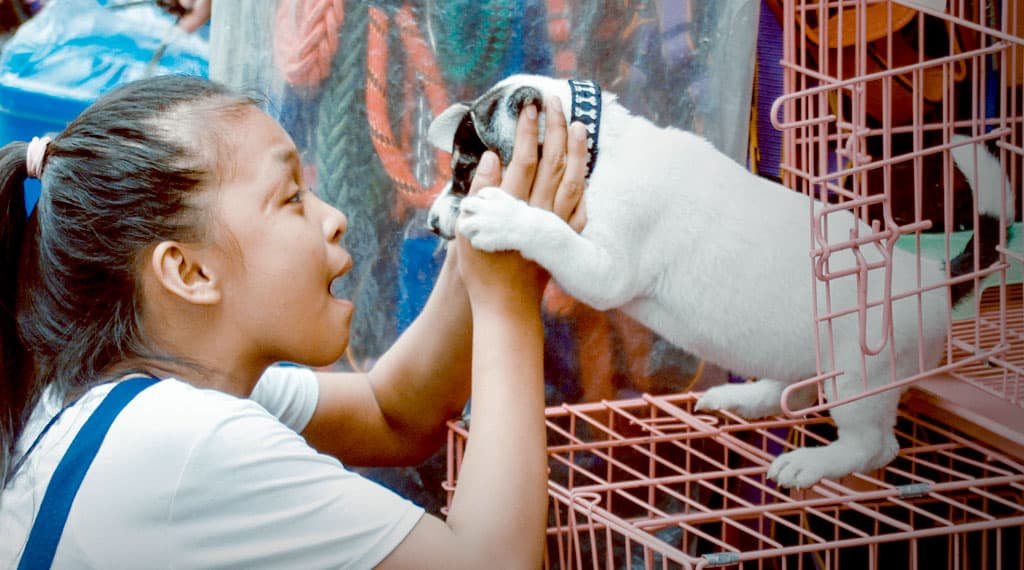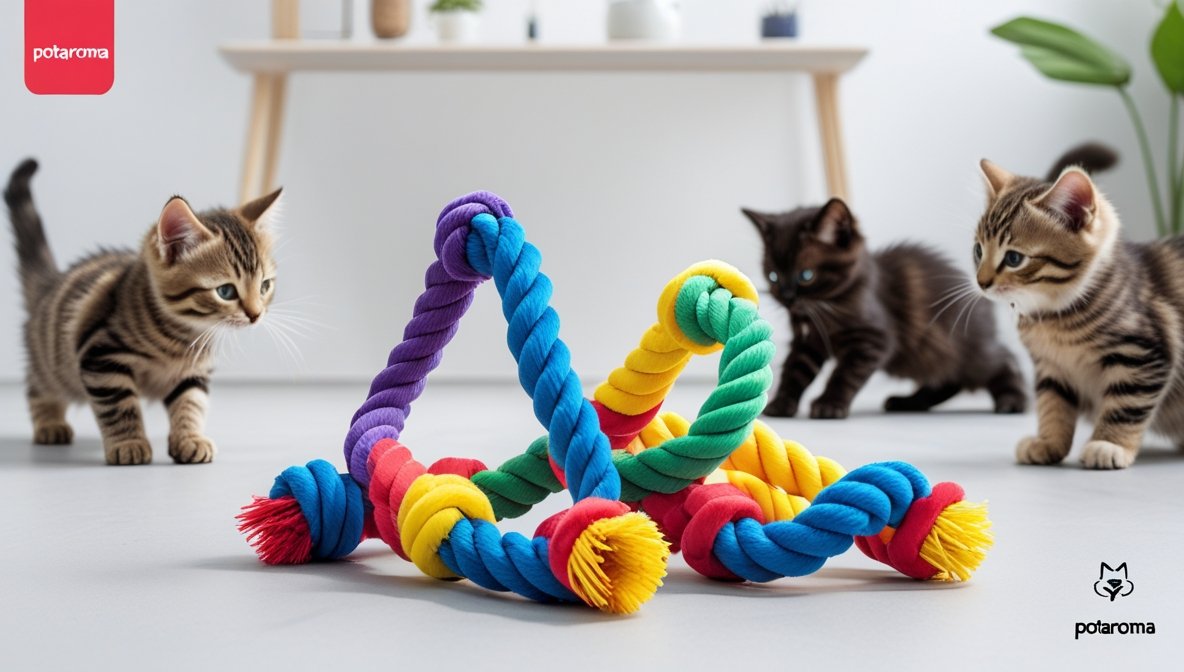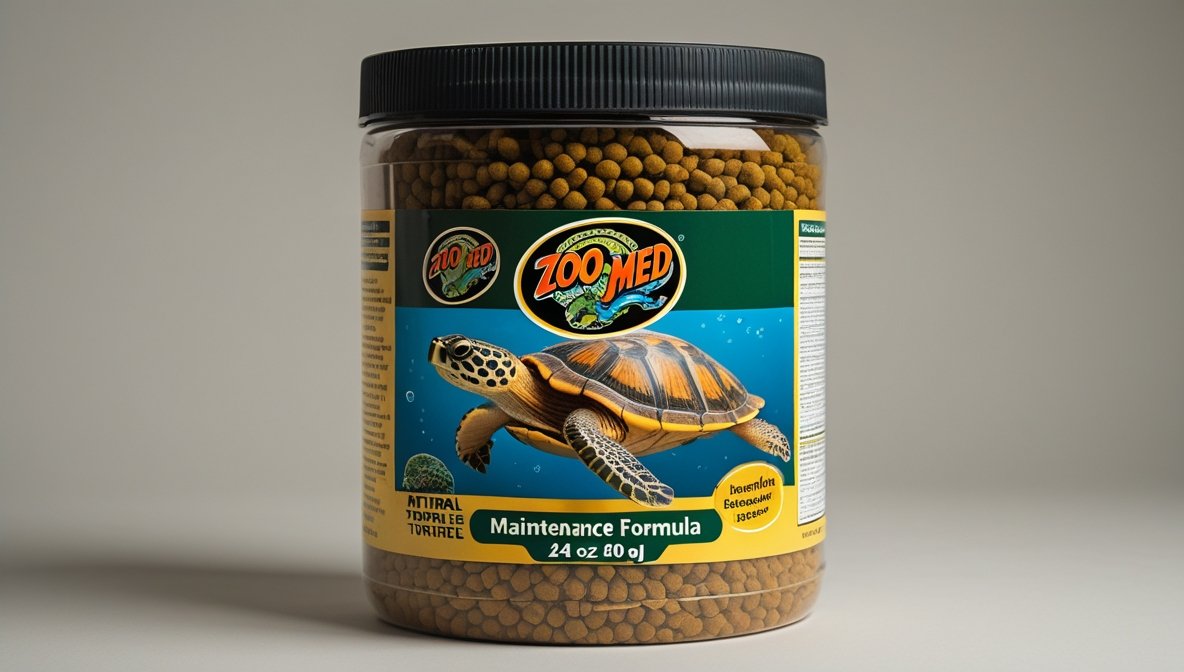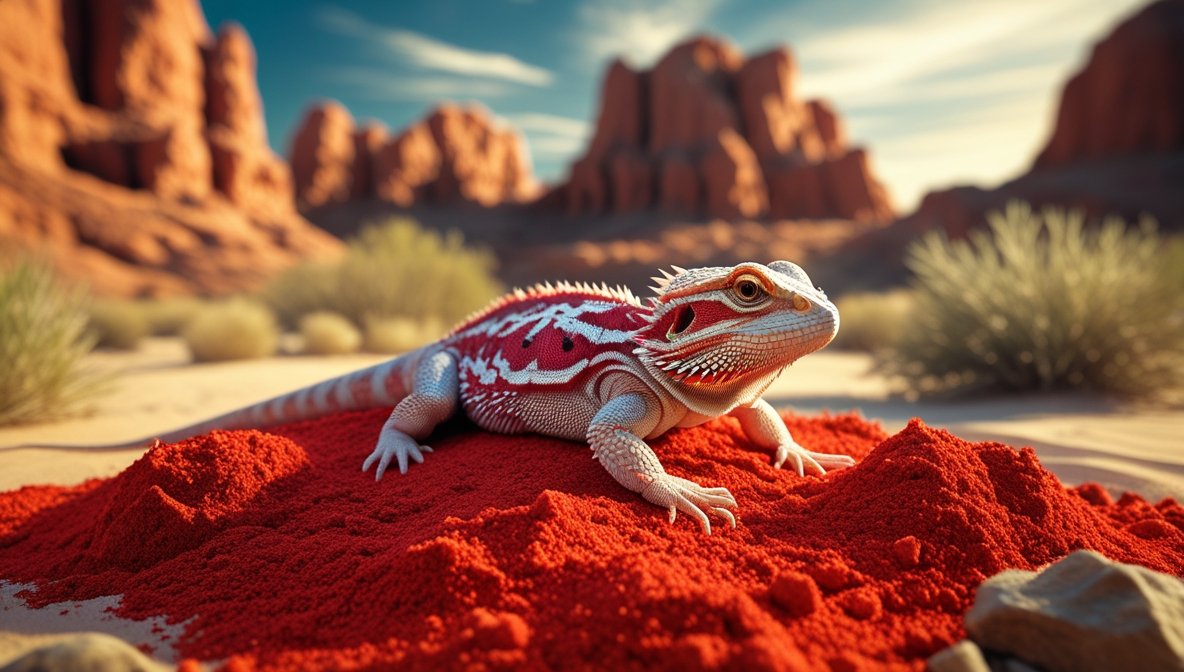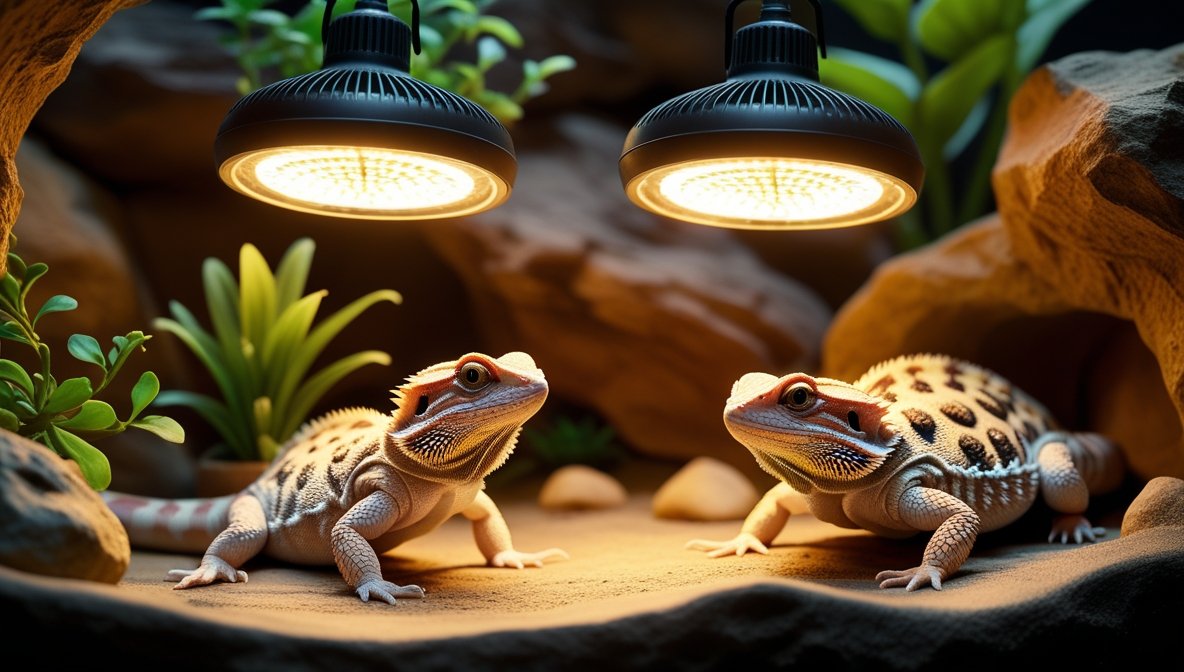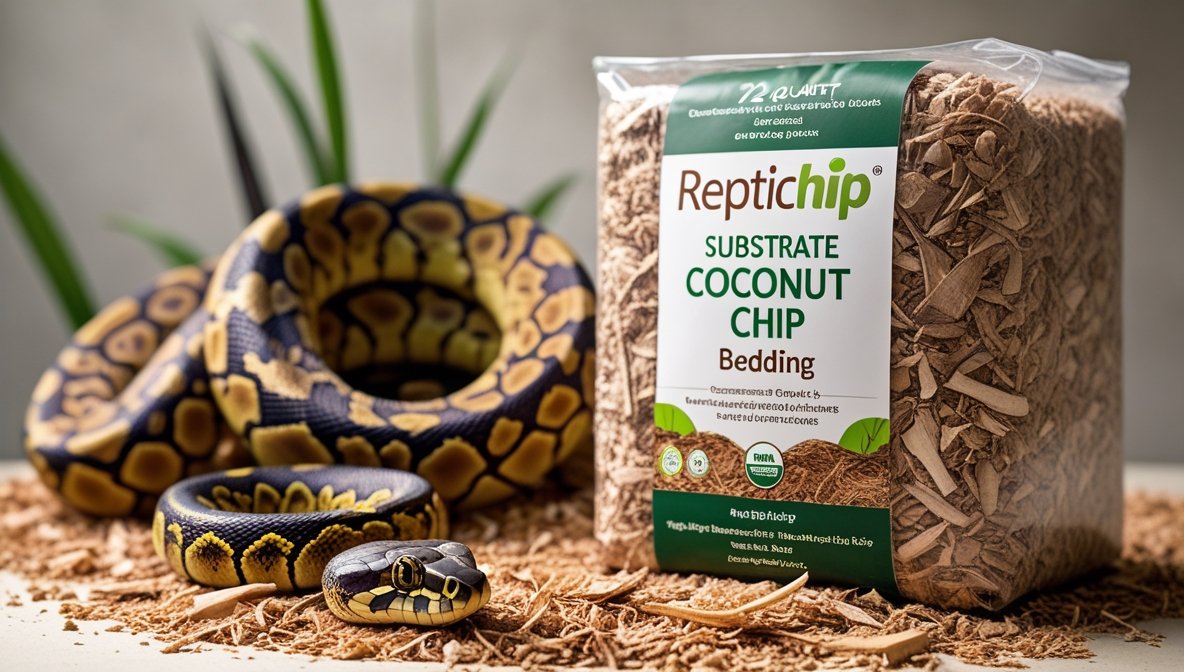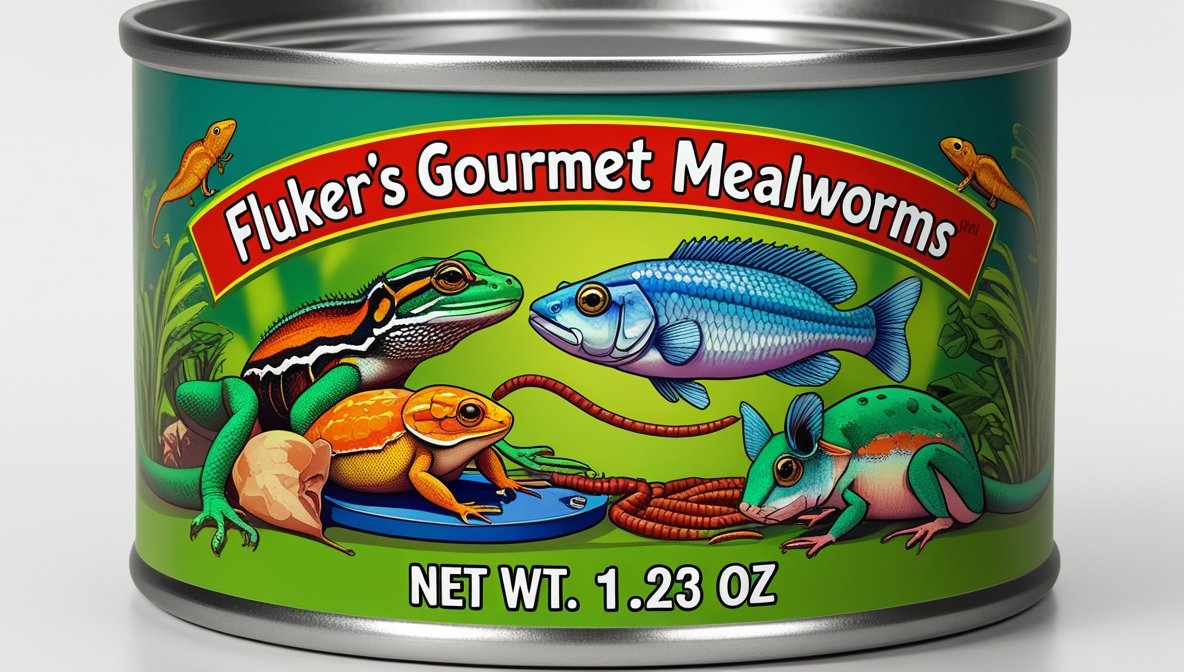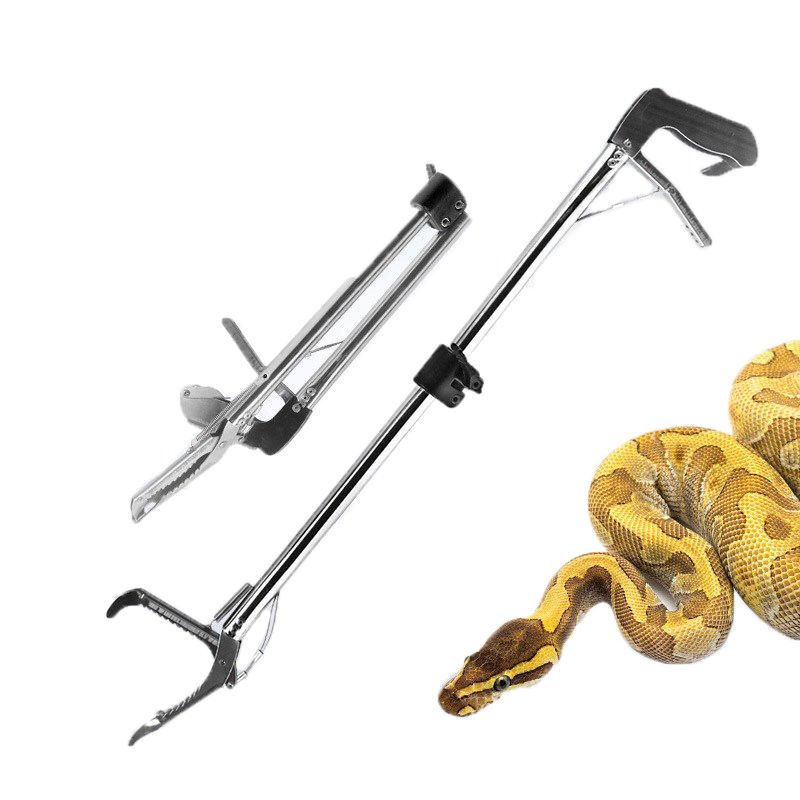Providing a balanced, species-appropriate diet is the single most important factor in ensuring your aquatic turtle lives a long, healthy, and vibrant life. For too long, turtle owners have been limited to generic, processed pellets that barely scratch the surface of their pet’s complex nutritional needs. The shift towards natural aquatic turtle food represents a revolution in herpetoculture, focusing on diets that mimic what turtles would consume in the wild.
This comprehensive guide is your roadmap to navigating this exciting shift. We will answer the fundamental question, “What is the best food for aquatic turtles?“ by exploring the 10 best natural aquatic turtle food products available in the USA, Canada, and Europe. From well-known brands like Zoo Med Aquatic Turtle Food and Mazuri Aquatic Turtle Food to innovative options you may not have discovered, we’ll provide detailed natural aquatic turtle food reviews, feeding guides, and expert tips. We’ll even tackle how to supplement with fresh foods and answer questions like “Can aquatic turtles eat fruit?” Get ready to transform your turtle’s diet from mere sustenance to a cornerstone of thriving health.
- No artificial colors or preservatives
- For Turtles over 6″ 5/16″ pellets
- 25% protein
Why a Natural Diet is Non-Negotiable for Aquatic Turtle Health
From Survival to Thriving: The Power of Natural Nutrition
Aquatic turtles, like Red-Eared Sliders, Painted Turtles, and Map Turtles, are not just simple carnivores or herbivores; their dietary needs change dramatically as they age. A one-size-fits-all pellet diet often leads to common health problems.
- Pyramiding: A deformity of the shell caused by improper protein-to-calcium ratios, often seen in turtles fed exclusively high-protein, low-quality pellets.
- Vitamin A Deficiency: Causes swollen eyes, lethargy, and respiratory infections. A natural diet rich in dark, leafy greens and certain fish provides ample Vitamin A.
- Obesity and Fatty Liver Disease: Overreliance on fatty pellets or feeder fish can lead to serious internal health issues.
- Lack of Enrichment: A varied natural aquatic turtle food diet provides mental stimulation, encouraging natural foraging behaviors.
A high-quality natural aquatic turtle food is formulated to address these issues. It uses whole-food ingredients, avoids artificial fillers, and is designed to complement a diet of fresh, appropriate foods.
What to Look for in a High-Quality Natural Aquatic Turtle Food
Decoding the Ingredient List
When evaluating the best natural aquatic turtle food, whether it’s a staple pellet or a supplemental treat, look for these key features:
- Whole Protein Sources: The first ingredient should be a specific, high-quality protein like whole fish meal, krill meal, or insect meal. Avoid vague terms like “fish products” or “animal protein.”
- Optimal Protein Levels:
- Hatchlings & Juveniles: Require higher protein (40-50%) for growth.
- Adults: Need lower protein (25-35%) with more plant matter to prevent obesity and shell deformities. This is why life-stage formulas, like the Zoo Med Aquatic Turtle Food Growth Formula for young turtles and the Maintenance formula for adults, are so important.
- Calcium to Phosphorus Ratio: Look for a minimum 2:1 Calcium-to-Phosphorus ratio. Calcium is critical for shell and bone health. Many top-tier foods include calcium carbonate or are designed to be fed with a cuttlebone.
- Natural Preservatives: Avoid BHA, BHT, and ethoxyquin. Prefer foods preserved with mixed tocopherols (Vitamin E) or rosemary extract natural aquatic turtle food.
- Limited Fillers: Minimize or avoid corn, wheat, and soy, which offer little nutritional value and can be difficult for turtles to digest.
The 10 Best Natural Aquatic Turtle Food Products in the USA for 2025
Top-Rated Commercial Diets for a Balanced Menu
After analyzing hundreds of products, user reviews on Amazon.com, and expert recommendations from veterinarians, here are the top 10 choices for a natural aquatic turtle food regimen.
1. Zoo Med Natural Aquatic Turtle Food (Maintenance Formula)
H3: The All-Around Balanced Staple
Zoo Med is a household name in reptile care, and their Natural Aquatic Turtle Food line is a benchmark for quality. The Maintenance Formula is specifically designed for adult turtles.
- Key Features: Fortified with essential vitamins and minerals, including Vitamin A and D3. Contains natural shrimp and fish meal as primary proteins. The floating sticks encourage natural surface feeding natural aquatic turtle food.
- Best For: Adult Red-Eared Sliders, Painted Turtles, Map Turtles, and other common aquatic species as a staple diet natural aquatic turtle food.
- Pros: Trusted brand, balanced nutrition for adults, readily available, turtles love the taste.
- Cons: Some users report the sticks can break down and cloud water if not eaten quickly.
- Amazon Verdict: ⭐⭐⭐⭐ (4.6/5) – Consistently praised as a reliable, high-acceptance staple food.
2. Zoo Med Aquatic Turtle Food Growth Formula
H3: The Perfect Start for Hatchlings
This is the counterpart to the maintenance formula, tailored for the demanding growth phase of young turtles. The Zoo Med Aquatic Turtle Food Hatchling Formula has smaller sticks and a higher protein content.
- Key Features: Higher protein levels (over 40%) to support rapid growth and development. The smaller pellet size is perfect for tiny mouths.
- Best For: Baby and juvenile turtles of all common aquatic species.
- Pros: Scientifically formulated for growth, highly palatable, easy for small turtles to eat.
- Cons: Should be transitioned to an adult formula as the turtle matures to prevent obesity.
- Amazon Verdict: ⭐⭐⭐⭐ (4.7/5) – Hatchling owners swear by it for raising healthy, fast-growing turtles.
3. Mazuri Aquatic Turtle Food
H3: The Breeder’s Choice for Premium Nutrition
Mazuri is a brand synonymous with excellence in exotic animal nutrition, often used by zoos and professional breeders. Their Mazuri Aquatic Turtle Food is a top-tier, nutritionally complete pellet.
- Key Features: Contains essential Omega-3 fatty acids for health and vitality. Highly digestible with optimized amino acid profiles. The Mazuri Aquatic Turtle Food, 25 lb bag is a popular choice for owners with multiple turtles natural aquatic turtle food.
- Best For: All life stages of aquatic turtles. A premium choice for serious hobbyists and breeders.
- Pros: Exceptional quality ingredients, excellent nutritional profile, supports overall health and shell development.
- Cons: More expensive than other brands; the pellets sink, which may not encourage natural surface feeding behavior for some species.
- Amazon Verdict: ⭐⭐⭐⭐⭐ (4.8/5) – Considered the “gold standard” by many experienced turtle keepers.
4. Tetra ReptoMin Floating Sticks
H3: The Classic, Trusted Staple
A product that has been a staple in the turtle-keeping community for decades, Tetra ReptoMin is a widely available and reliable option.
- Key Features: A floating stick that mimics natural feeding behavior. Formulated with shrimp and other seafood that turtles find irresistible natural aquatic turtle food.
- Best For: A budget-friendly, readily available staple diet for common aquatic turtles.
- Pros: Very affordable, floats well, easy to find in most pet stores, great acceptance.
- Cons: Contains more fillers (like wheat) than premium brands like Mazuri. Best used as part of a varied diet.
- Amazon Verdict: ⭐⭐⭐⭐ (4.7/5) – A classic for a reason, trusted by generations of turtle owners.
5. Omega One Aquatic Turtle Pellets
H3: The Whole-Fish Ingredient Leader
Omega One’s philosophy is to use more whole-fish ingredients and fewer fillers. Their turtle pellets reflect this commitment to quality.
- Key Features: Uses fresh, sustainably caught fish (like whole salmon) as the first ingredient. Preserved with mixed tocopherols (Vitamin E).
- Best For: Owners looking for a high-quality pellet with superior ingredient sourcing.
- Pros: Whole-fish protein source, natural color enhancers, low-starch formula, less water pollution.
- Cons: Sinking pellets, and the smell can be strong (a sign of real fish content).
- Amazon Verdict: ⭐⭐⭐⭐ (4.5/5) – Highly rated for its ingredient quality and the health benefits observed by users.
6. Fluker’s Buffet Blend Aquatic Turtle Food
H3: The Variety Pack for Picky Eaters
This unique product combines multiple food types in one bag to provide variety and entice even the pickiest turtles natural aquatic turtle food.
- Key Ingredients: A blend of floating pellets, dried river shrimp, and dried mealworms.
- Best For: Adding variety to a staple diet or encouraging turtles that are reluctant to eat.
- Pros: Great for dietary rotation, the shrimp and worms are a high-value treat, stimulates natural foraging natural aquatic turtle food.
- Cons: The dried insects can be high in fat and should not make up the majority of the diet.
- Amazon Verdict: ⭐⭐⭐⭐ (4.3/5) – Perfect as a “spice” to mix with a primary pellet.
7. Hikari Tropical Saki-Hikari Wheat Germ Pellets
H3: The Digestive Health Specialist
While marketed for koi, these pellets are an excellent supplemental food for turtles, especially those that need a easily digestible, plant-based option.
- Key Features: Formulated with wheat germ, which is highly digestible and ideal for supporting digestion. Contains natural color enhancers.
- Best For: Supplemental feeding for adult turtles, especially in cooler water temperatures when digestion slows.
- Pros: Promotes excellent digestive health, enhances red and yellow coloration, sinks slowly.
- Cons: Not a complete staple; should be used in rotation with other foods.
- Amazon Verdict: ⭐⭐⭐⭐ (4.6/5) – Koi keepers love it, and turtle owners find it a great digestive aid.
8. Repashy Meat Pie Gel Food
H3: The Customizable, All-Natural Gel Diet
Repashy is renowned for its high-quality gel diets for reptiles. Meat Pie is a carnivorous formula that can be a fantastic, natural option for turtles.
- Key Features: You mix the powder with boiling water to create a nutrient-dense gel. It’s made with real meat and insect proteins and is free from fillers.
- Best For: A occasional, high-protein treat or for medicating turtles by mixing in supplements or medication.
- Pros: Completely customizable, very high-quality ingredients, great for mixing in calcium or vitamins.
- Cons: Requires preparation, and the gel can cloud water if not consumed quickly.
- Amazon Verdict: ⭐⭐⭐⭐ (4.5/5) – A favorite for those who want total control over their pet’s diet.
9. JurassiDiet Jurassic Grub Canned Food
H3: The Natural Prey Supplement
This canned food consists of pure, nutrient-rich Black Soldier Fly Larvae (BSFL), a fantastic natural prey item.
- Key Ingredients: Black Soldier Fly Larvae, water.
- Best For: A high-calcium, protein-rich treat. BSFL are naturally high in calcium, reducing the need for dusting.
- Pros: Single-ingredient, all-natural, extremely high in calcium, great for enticing picky eaters.
- Cons: Strong smell, not a complete diet, should be used as a supplement.
- Amazon Verdict: ⭐⭐⭐⭐ (4.2/5) – An excellent source of natural calcium and protein.
10. Nature Zone Snails for Reptiles (Canned)
The Novel Protein Source
Snails are a natural part of many aquatic turtles’ diets in the wild. This canned offering provides a safe, parasite-free source.
- Key Ingredients: Snails, water.
- Best For: Providing variety and a novel protein source for turtles like Softshells and Snapping Turtles.
- Pros: Natural behavior enrichment, novel protein helps prevent allergies, good for turtles that need crunchier food for beak health.
- Cons: Not all turtles will recognize it as food; it’s a supplemental item.
- Amazon Verdict: ⭐⭐⭐⭐ (4.0/5) – A niche but valuable product for dietary rotation.
- No artificial colors or preservatives
- For Turtles over 6″ 5/16″ pellets
- 25% protein
How to Create a Complete Natural Diet: Beyond Commercial Pellets
How to Make Aquatic Turtle Food with Fresh Ingredients
The best natural aquatic turtle food regimen combines a high-quality commercial pellet with a variety of fresh, appropriate foods. Here’s how to build a balanced menu.
H3: Animal-Based Proteins (For Hatchlings, Juveniles, and as Part of an Adult’s Diet)
- Live/Frozen Foods: Earthworms, crickets, dubia roaches, bloodworms, mysis shrimp.
- Fish: Offer small, whole feeder fish like guppies or minnows occasionally (avoid goldfish, which are fatty and contain thiaminase) natural aquatic turtle food.
- Aquatic Snails: A great natural source of calcium and protein.
Plant Matter (Crucial for Adults)
- Dark, Leafy Greens: Romaine lettuce, red leaf lettuce, dandelion greens, turnip greens, kale (in moderation).
- Aquatic Plants: Anacharis, water lettuce, duckweed (which they can graze on).
- Vegetables: Shredded carrots, zucchini, squash, bell peppers.
What About Fruit? Can Aquatic Turtles Eat Fruit?
Yes, but in strict moderation. Fruit should be considered a rare treat, not a dietary staple. The high sugar content can disrupt their digestive system. Safe options include:
- Berries (strawberries, blueberries)
- Melon
- Apple (without seeds)
- Frequency: No more than once every 2-4 weeks.
Feeding Schedule and Tips for Optimal Health
Putting It All Together
- Hatchlings (Under 1 year): Feed a high-protein pellet like Zoo Med Growth Formula daily, along with daily offerings of small, live prey.
- Juveniles (1-3 years): Feed a balanced pellet every other day. The diet should be 50% protein / 50% plant matter.
- Adults (Over 3 years): Feed a maintenance pellet 2-3 times per week. The diet should be 25% protein / 75% plant matter.
- The 15-Minute Rule: Offer only as much food as your turtle can consume in 15 minutes to avoid overfeeding and water pollution natural aquatic turtle food.
- Supplementation: Always provide a cuttlebone in the water for additional calcium, and use a reptile-specific multivitamin powder once a week.
Here’s a comparative table of several natural / more wholesome aquatic turtle foods sold on Amazon (and related Amazon sites), along with their features, pros & cons based on user reviews. This can help you choose what might work best for your turtle(s). If you want, I can also show local options or ones that ship well to Dhaka.
| Product | Key Features / Ingredients | Protein & Nutrient Profile | What Users Like | What Users Dislike / Caveats |
|---|---|---|---|---|
| Zoo Med Natural Maintenance Formula Aquatic Turtle Food | Floating pellets; claims “no artificial preservatives, colors, or flavors.” | ~ 35% protein; formulated for adult aquatic turtles (~2-6 in) | Very well-rated (≈4.7/5 from thousands of users). Users say turtles like it, it delivers good value, long lasting, and looks healthy. | Some reviews mention pellet size too large for small turtles; some prefer more variety in diet rather than just pellets. (As with many pelleted diets.) |
| Zoo Med Natural Aquatic Turtle Food – 2-Pack (6.5 oz per container, Adult size pellets) | Made for larger turtles (6+ in); floating pellets; no artificial flavor/color/preservatives. | High protein (for adult stage), balanced nutrient mix. Exact protein % not always shown in the snippet. | Users say turtles “love it”; good price for portion; convenient. | Pellet size may still be too large for younger or small turtles; some find smell or texture less preferable; also, being a 2-pack may not be ideal if product gets stale. |
| Zoo Med Natural Hatchling Formula Aquatic Turtle Food | Designed for hatchling turtles; smaller pellet / particle size; same “natural” claims (no artificial colors, etc.) | Typically higher protein for growth; good balance of nutrients for young turtles. | Users like that young turtles eat it well; appreciated by people who want growth + health; lasts a while; value for size. | Some say the pellets are larger than expected even in “small” size; if the hatchling is very small, pieces may need to be broken up. Also cost per gram is higher for hatchling-formulas. |
| Mazuri Nutritionally Complete Aquatic Turtle Food, Freshwater Formula | Floating pellet diet; “nutritionally complete,” meaning you shouldn’t need extra vitamin/mineral supplements; good for carnivorous freshwater species. | High fish / animal protein; includes natural vitamin E; made to support carnivorous feeding behaviour. | Very well rated (~4.8/5); users appreciate the completeness and that their more “picky” turtles accept it; good for turtles that need more animal protein. | Cost tends to be higher (especially in large, good-quality bags); possibly too rich in protein for turtles that should have more plant matter; watch calcium/phosphorus balance especially if you also feed other protein-rich foods. |
| King British Turtle and Terrapin Complete Food (80g) | A “complete” diet pellet mix; includes ocean shrimps, freeze-dried river shrimp, krill; intended to encourage natural behaviour. High calcium content; with algae extract and vitamin C. | Good mix of proteins (from shrimps etc.) plus supplements; intended to support shell & bone health. | Users like the natural bits (shrimp etc.) that provide texture & interest; beneficial for shell health; appeals to turtles that need or enjoy natural prey items. | Smaller pack size (80g) means may run out quickly; price per gram tends to be higher; some turtles may “pick out” the bits and leave the rest; may need mixing with other foods to get variety. |
- No artificial colors or preservatives
- For Turtles over 6″ 5/16″ pellets
- 25% protein
What to Watch Out For (Across Products):
- Pellet / particle size: small hatchlings need tiny particles; larger turtles can handle bigger stuff.
- Protein vs plant balance: Some turtles (e.g. red-eared sliders) require more protein when young; others need more plant matter. Too much protein (especially from fish or meat) without enough calcium or vitamin D3 can lead to shell / kidney issues.
- Calcium & vitamin D3: Critical for shell growth; ensure the food has a good Ca:P ratio or supplement if needed.
- Floating vs sinking: Floating foods are easier to feed and monitor; turtles tend to prefer surface feeding. Sinking foods can lead to waste / water quality issues if not eaten promptly.
- Preservatives, artificial coloring: “Natural” is a loosely regulated term. Products that explicitly say “no artificial flavors, colors, or preservatives” are generally better (less risk of unwanted chemicals). Still check ingredient lists especially if your turtle has sensitivities.
- Variation: Even with “natural” pellets, it’s good to supplement occasionally with fresh foods (insects, leafy greens, aquatic plants) for enrichment and nutritional completeness.
FAQs: Your Natural Aquatic Turtle Food Questions Answered
Frequently Asked Questions
What is the best food for aquatic turtles?
There isn’t one single best food for aquatic turtles. The healthiest diet is a varied one. The foundation should be a high-quality commercial pellet like Mazuri Aquatic Turtle Food or Zoo Med Natural Aquatic Turtle Food, supplemented with fresh, appropriate foods like dark leafy greens, earthworms, and occasional fish. The best diet is tailored to your turtle’s species, age, and health.
How to make aquatic turtle food at home?
You can make aquatic turtle food by creating a homemade gel diet or simply offering fresh foods. A simple recipe: blend a combination of leafy greens (like kale), a small amount of fruit (like a strawberry for flavor), a protein source (canned tuna in water or cooked chicken), and unflavored gelatin. Pour into a mold, refrigerate, and feed small cubes. However, it’s challenging to ensure complete nutrition, so homemade food is best used as a supplement to a commercial diet.
Can aquatic turtles eat fruit?
Yes, aquatic turtles can eat fruit, but only as an occasional treat. Fruit is high in sugar, which can lead to digestive issues and obesity if fed too often. Offer small amounts of safe fruits like berries or melon no more than once a month. The bulk of their plant intake should come from dark, leafy greens and vegetables.
What is the difference between growth and maintenance formulas?
Growth formulas, like the Zoo Med Aquatic Turtle Food Hatchling Formula, are higher in protein (40-50%) to support the rapid development of young turtles. Maintenance formulas for adults have lower protein (25-35%) and more plant-based ingredients to prevent obesity and shell pyramiding, which are common in adults on a high-protein diet.
Conclusion: Elevate Your Turtle’s Health with Natural Nutrition
Transitioning to a natural aquatic turtle food diet is one of the most rewarding changes you can make for your pet. By moving beyond a single bag of pellets and embracing a varied diet centered on high-quality commercial foods like Zoo Med and Mazuri, and supplemented with fresh, wholesome ingredients, you are investing in your turtle’s long-term vitality.
- No artificial colors or preservatives
- For Turtles over 6″ 5/16″ pellets
- 25% protein
Remember, the key is variety and balance tailored to your turtle’s life stage. A hatchling’s needs are vastly different from an adult’s. By following the guidelines in this guide, you can confidently answer the question, “What is the best food for aquatic turtles?” and provide an answer that ensures your shelled companion thrives for decades to come.
What does your turtle’s diet look like? Share your favorite natural foods and feeding tips in the comments below to help other turtle owners in our community!

